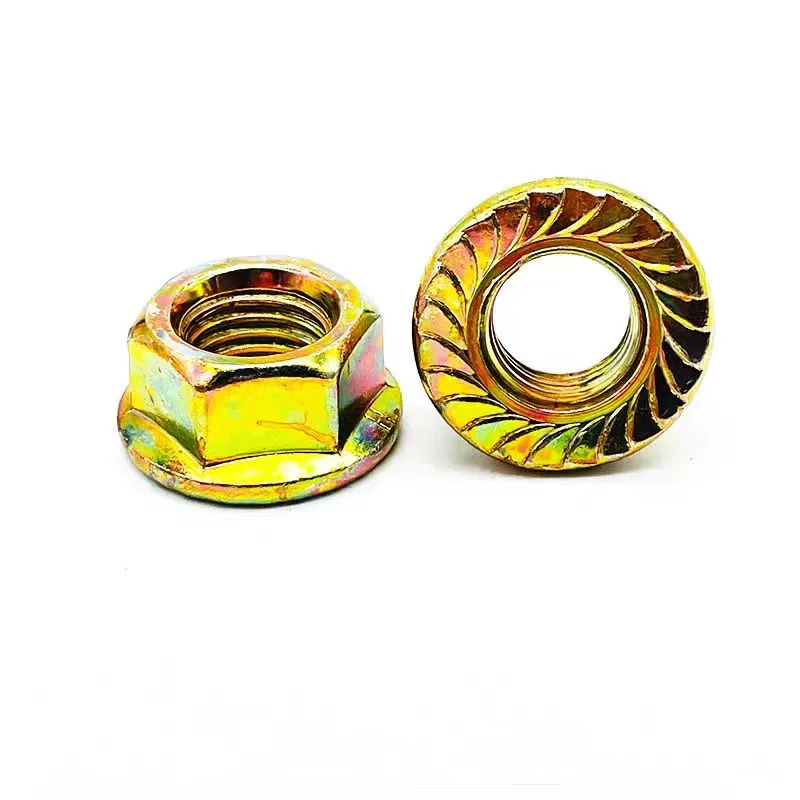

Comparison of Flat Washers and Spring Washers for Mechanical Applications
ডিসে. . 12, 2024 17:53 Back to list
Comparison of Flat Washers and Spring Washers for Mechanical Applications
Flat Washers vs. Spring Washers Understanding the Differences and Applications
In the realm of mechanical engineering and construction, washers play a crucial role in ensuring the stability and longevity of connections. Two prevalent types of washers used across various applications are flat washers and spring washers. While they might appear similar at first glance, their functions, designs, and applications differ significantly. This article delves into the characteristics, advantages, and typical uses of flat washers and spring washers.
Flat Washers Definition and Function
Flat washers are thin, disc-shaped pieces of material, usually made from metal like steel, stainless steel, or plastic. Their primary function is to distribute the load of a threaded fastener such as a bolt or nut. By increasing the surface area that comes in contact with the material, flat washers help prevent damage to the surface and minimize the risk of loosening due to vibration.
The design of flat washers is straightforward. They essentially feature a central hole that allows them to be placed over the shaft of a bolt or screw. Flat washers are generally used in situations where there is a need to provide a smooth surface for load distribution, reduce wear, or provide a barrier between the fastener and material surface.
Advantages of Flat Washers
1. Load Distribution One of the key advantages of flat washers is their ability to distribute loads uniformly, reducing pressure on the materials being fastened. This is essential in applications involving softer materials that could deform under pressure.
2. Surface Protection Flat washers protect the surface of the workpiece from damage caused by the fastener head upon tightening. This is particularly important in delicate or painted surfaces.
3. Vibration Resistance While flat washers alone do not actively resist vibration, they help maintain bolt tension by minimizing friction between the fastener and the material.
Spring Washers Definition and Function
Spring washers, often referred to as lock washers, are designed to exert a spring force in order to absorb shock and prevent loosening of fasteners under dynamic loads. The most common type of spring washer is the belleville washer, which has a conical shape that provides a spring-like action.
flat washer and spring washer

The primary function of spring washers is to provide tension and maintain clamp force on bolted joints. When a spring washer is compressed, it can absorb energy, allowing it to expand back to its original shape, thus maintaining a consistent force on the fastener.
Advantages of Spring Washers
1. Vibration Resistance Spring washers are particularly effective in applications subject to vibrations or dynamic loads. They help maintain tension, reducing the likelihood of fasteners loosening over time.
2. Shock Absorption The design of spring washers allows them to absorb energy from shocks or impacts, further enhancing the stability of bolted connections.
3. Self-Locking Feature Many spring washers are designed to provide a locking effect, preventing fasteners from turning or loosening even in high-vibration environments.
Applications of Flat and Spring Washers
Both types of washers are widely used in various industries, including automotive, aerospace, construction, and machinery.
- Flat Washers These are commonly found in applications where load distribution is required, such as in furniture assembly, electronic devices, and general engineering applications. They are also used in plumbing and piping systems to ensure a watertight seal.
- Spring Washers Due to their ability to resist vibration, spring washers are extensively used in machinery, automotive components, and equipment that experiences frequent movement. They are often found in applications such as motor mounts, gearbox assemblies, and other critical fastening points.
Conclusion
While flat washers and spring washers may seem similar, their distinct functions cater to different requirements in mechanical assemblies. Flat washers excel in load distribution and surface protection, while spring washers are designed to provide tension and resist loosening under dynamic conditions. Understanding these differences can help engineers and technicians select the appropriate washer for their specific applications, ensuring the reliability and longevity of connections in various mechanical systems. In conclusion, both flat and spring washers are indispensable components in the world of engineering, contributing to the integrity and performance of countless applications.
Latest news
-
Hot Dip Galvanized Bolts-About LongZe|High Strength, Corrosion Resistance
NewsJul.30,2025
-
High-Strength Hot Dip Galvanized Bolts - Hebei Longze | Corrosion Resistance, Customization
NewsJul.30,2025
-
Hot Dip Galvanized Bolts-Hebei Longze|Corrosion Resistance&High Strength
NewsJul.30,2025
-
High-Strength Hot-Dip Galvanized Bolts-Hebei Longze|Corrosion Resistance&High Strength
NewsJul.30,2025
-
Hot Dip Galvanized Bolts-Hebei Longze|Corrosion Resistance&High Strength
NewsJul.30,2025
-
Hot Dip Galvanized Bolts - Hebei Longze | Corrosion Resistance, High Strength
NewsJul.30,2025

